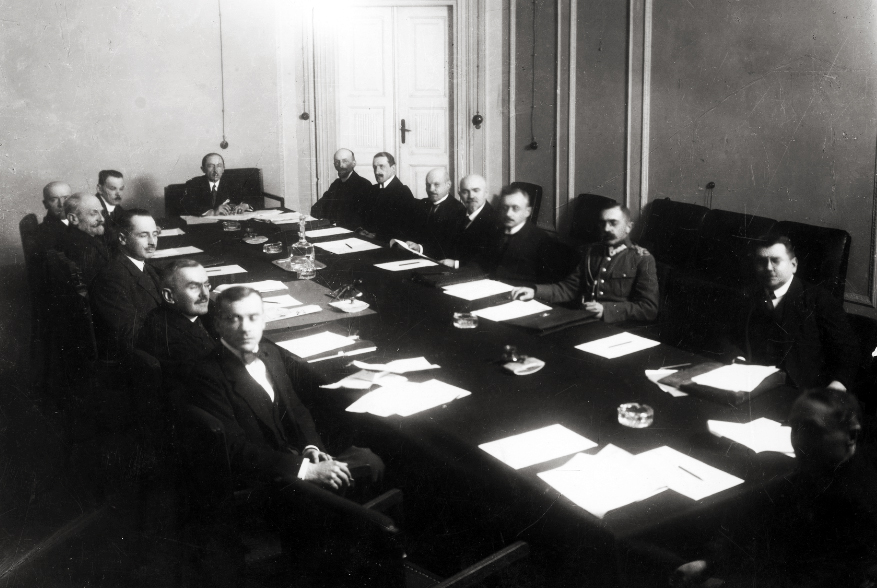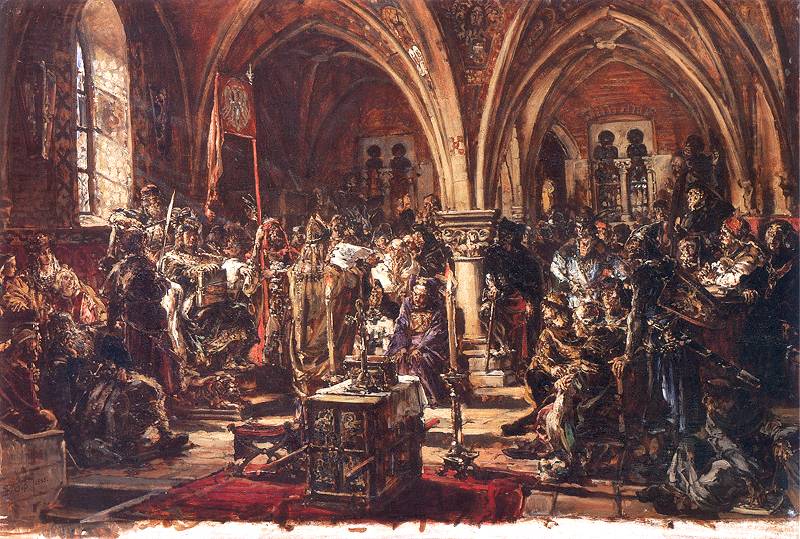|
Monitor Polski
''Monitor Polski'' ( en, Official Gazette of the Republic of Poland, abbreviated ''M. P.'' or ''MP'') is a publication of the Prime Minister of the Republic of Poland. The paper was launched in 1918. Between September and December 1939, the government section of the paper was published from France by the exiled government. In 1945 it continued from Poland. Since 1950, it has been published by the office of the Prime Minister to report legislation of the Parliament (Sejm The Sejm (English: , Polish: ), officially known as the Sejm of the Republic of Poland ( Polish: ''Sejm Rzeczypospolitej Polskiej''), is the lower house of the bicameral parliament of Poland. The Sejm has been the highest governing body of ...). The paper has two sections: the governmental section which covers orders and decrees and non-governmental section which includes varied materials. Unlike '' Dziennik Ustaw'', the acts published in ''Monitor'' are not a source of laws or obligations on the part of Po ... [...More Info...] [...Related Items...] OR: [Wikipedia] [Google] [Baidu] |
Prime Minister Of The Republic Of Poland
The President of the Council of Ministers ( pl, Prezes Rady Ministrów, lit=Chairman of the Council of Ministers), colloquially referred to as the prime minister (), is the head of the cabinet and the head of government of Poland. The responsibilities and traditions of the office stem from the creation of the contemporary Polish state, and the office is defined in the Constitution of 1997. According to the Constitution, the president nominates and appoints the prime minister, who will then propose the composition of the Cabinet. Fourteen days following their appointment, the prime minister must submit a programme outlining the government's agenda to the Sejm, requiring a vote of confidence.Article 154, para. 2 Conflicts stemming from both interest and powers have arisen between the offices of President and Prime Minister in the past. The incumbent and seventeenth prime minister is Mateusz Morawiecki of the Law and Justice party. Morawiecki replaced Prime Minister Beata Szyd� ... [...More Info...] [...Related Items...] OR: [Wikipedia] [Google] [Baidu] |
Sejm
The Sejm (English: , Polish: ), officially known as the Sejm of the Republic of Poland ( Polish: ''Sejm Rzeczypospolitej Polskiej''), is the lower house of the bicameral parliament of Poland. The Sejm has been the highest governing body of the Third Polish Republic since the transition of government in 1989. Along with the upper house of parliament, the Senate, it forms the national legislature in Poland known as National Assembly ( pl, Zgromadzenie Narodowe). The Sejm is composed of 460 deputies (singular ''deputowany'' or ''poseł'' – "envoy") elected every four years by a universal ballot. The Sejm is presided over by a speaker called the "Marshal of the Sejm" (''Marszałek Sejmu''). In the Kingdom of Poland, the term "''Sejm''" referred to an entire two- chamber parliament, comprising the Chamber of Deputies ( pl, Izba Poselska), the Senate and the King. It was thus a three-estate parliament. The 1573 Henrician Articles strengthened the assembly's jurisdiction, m ... [...More Info...] [...Related Items...] OR: [Wikipedia] [Google] [Baidu] |
Dziennik Ustaw
''Dziennik Ustaw'' or ''Dziennik Ustaw Rzeczypospolitej Polskiej'' ( en, Journal of Laws of the Republic of Poland, abbreviated Dz. U.) is the most important Polish publication of legal acts. It is the only official source of law for promulgation of Polish laws. The publication of this journal is solely the responsibility of the Prime Minister of the Republic of Poland. 'Dziennik Ustaw' traces its history to the 1918 'Dziennik Praw Królestwa Polskiego' ( en, Journal of Laws of the Kingdom of Poland) and has changed its name several times during its existence. According to Article 122 of the Constitution of Poland of 1997, ''The President of the Republic shall sign a bill within 21 days of its submission and shall order its promulgation in the Journal of Laws of the Republic of Poland (Dziennik Ustaw) The matter is further regulated by articles 87 and 234 of the constitution, as well as by the Article 9 of the ''Act on Publishing Normative Acts and Several Other Legal Acts'' of ... [...More Info...] [...Related Items...] OR: [Wikipedia] [Google] [Baidu] |
Constitutional Law
Constitutional law is a body of law which defines the role, powers, and structure of different entities within a state, namely, the executive, the parliament or legislature, and the judiciary; as well as the basic rights of citizens and, in federal countries such as the United States and Canada, the relationship between the central government and state, provincial, or territorial governments. Not all nation states have codified constitutions, though all such states have a '' jus commune'', or law of the land, that may consist of a variety of imperative and consensual rules. These may include customary law, conventions, statutory law, judge-made law, or international rules and norms. Constitutional law deals with the fundamental principles by which the government exercises its authority. In some instances, these principles grant specific powers to the government, such as the power to tax and spend for the welfare of the population. Other times, constitutional principles act ... [...More Info...] [...Related Items...] OR: [Wikipedia] [Google] [Baidu] |
Government Gazettes
A government gazette (also known as an official gazette, official journal, official newspaper, official monitor or official bulletin) is a periodical publication that has been authorised to publish public or legal notices. It is usually established by statute or official action, and publication of notices within it, whether by the government or a private party, is usually considered sufficient to comply with legal requirements for public notice. Gazettes are published either in print, electronically or both. Publication within privately owned periodicals In some jurisdictions, privately owned newspapers may also register with the public authorities in order to publish public and legal notices. Likewise, a private newspaper may be designated by the courts for publication of legal notices. These are referred to as "legally adjudicated newspapers". See also *List of government gazettes This is a list of government gazettes. See also *List of British colonial gazettes Not ... [...More Info...] [...Related Items...] OR: [Wikipedia] [Google] [Baidu] |
Law Of Poland
The Polish law or legal system in Poland has been developing since the first centuries of Polish history, over 1,000 years ago. The public and private laws of Poland are codified. The supreme law in Poland is the Constitution of Poland. Poland is a civil law legal jurisdiction and has a civil code, the ''Civil Code'' of Poland. The Polish parliament creates legislation (law) and is made up of the 'Senate' (upper house) and the Sejm (lower house). Legal areas Polish public and private laws are divided into various areas, including, for example: *civil law (''prawo cywilne''), much of which is contained in the ''Polish Civil Code'' *commercial law (''prawo handlowe'') notably the ''Polish Code of Commercial Partnerships and Companies'' *copyright law A copyright is a type of intellectual property that gives its owner the exclusive right to copy, distribute, adapt, display, and perform a creative work, usually for a limited time. The creative work may be in a literary, ... [...More Info...] [...Related Items...] OR: [Wikipedia] [Google] [Baidu] |
Polish-language Newspapers
Polish (Polish: ''język polski'', , ''polszczyzna'' or simply ''polski'', ) is a West Slavic language of the Lechitic group written in the Latin script. It is spoken primarily in Poland and serves as the native language of the Poles. In addition to being the official language of Poland, it is also used by the Polish diaspora. There are over 50 million Polish speakers around the world. It ranks as the sixth most-spoken among languages of the European Union. Polish is subdivided into regional dialects and maintains strict T–V distinction pronouns, honorifics, and various forms of formalities when addressing individuals. The traditional 32-letter Polish alphabet has nine additions (''ą'', ''ć'', ''ę'', ''ł'', ''ń'', ''ó'', ''ś'', ''ź'', ''ż'') to the letters of the basic 26-letter Latin alphabet, while removing three (x, q, v). Those three letters are at times included in an extended 35-letter alphabet, although they are not used in native words. The traditional set co ... [...More Info...] [...Related Items...] OR: [Wikipedia] [Google] [Baidu] |



